Faron
Young

-
Inducted2000
-
Born
February 25, 1932
-
Died
December 10, 1996
-
Birthplace
Shreveport, Louisiana
From the early 1950s through the mid-1970s, Faron Young ranked among the top stars and most colorful personalities of country music. Signature hits such as “If You Ain’t Lovin’ (You Ain’t Livin’)” and “Live Fast, Love Hard, Die Young” marked him as a honky-tonker in both sound and personal style, while other chart-topping singles (for example, “Hello Walls” and “It’s Four in the Morning”) showed off his versatility as a vocalist.
A music industry entrepreneur, Young invested in Music Row real estate, and in the 1960s he published the influential trade paper Music City News. Though his career did not lack for controversy, Young’s voluble, outgoing personality was well received, and the entire community was as shocked as it was saddened when he died of a self-inflicted gunshot wound at age sixty-four.
Songs
00:00 / 00:00
00:00 / 00:00
00:00 / 00:00
00:00 / 00:00
Louisiana Beginnings and Capitol Hits
Born in Shreveport and raised on a farm outside town, Young, as a teenager, was more interested in pop music than in country music. That changed, however, when his high school football coach, who moonlighted in a country band, started Young singing at the local Optimist club and nursing homes. Young then met Webb Pierce and began working with him in clubs and on Shreveport’s KWKH. By 1951, Young was appearing on the radio station’s feature program, the Louisiana Hayride.
Though recorded in Shreveport, Young’s first sides appeared on Philadelphia’s Gotham label. By February 1952, however, he had been signed to Capitol Records, for which he would record for the next ten years. His first Capitol single appeared that spring, and soon thereafter he moved to Nashville. He cut his first chart hit, “Goin’ Steady,” in October 1952, but his career got sidetracked when he was drafted into the army the following month. While in the service, he performed on army recruitment programs and continued to record. He was discharged in November 1954, just as “If You Ain’t Lovin’” was hitting the charts.
From 1954 to 1962, Young cut a slew of honky-tonk classics for Capitol, including the first hit version of Don Gibson’s “Sweet Dreams.” Most famous was “Hello Walls,” a crossover smash in 1961. It was written by Willie Nelson, who reportedly pitched the song to Young at Tootsie’s Orchid Lounge.
Videos
“It’s a Great Life”
Country Music Caravan, 1966
“Live Fast, Love Hard, Die Young”
Country Music Caravan, 1955
From 1954 to 1962, Faron Young cut a slew of honky-tonk classics for Capitol, including the first hit version of Don Gibson’s “Sweet Dreams.” Most famous was “Hello Walls,” a crossover smash in 1961. It was written by Willie Nelson, who reportedly pitched the song to Young at Tootsie’s Orchid Lounge.
Photos
-
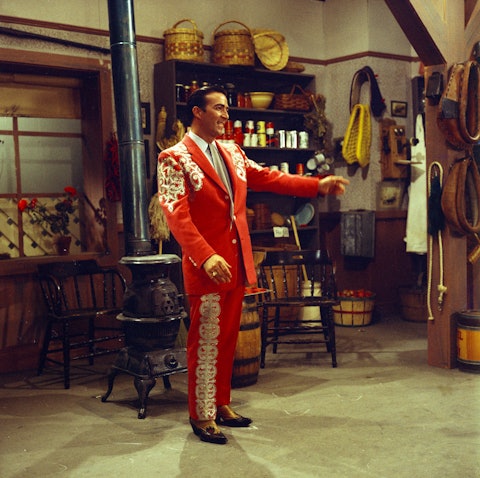
Faron Young on the set of an unidentified television show, possibly Country Style, U.S.A., c. late 1950s.
-

Faron Young (left) during a session at Bradley Studios, c. late 1950s. Others remain unidentified.
-

Faron Young and the Jordanaires during a session at Bradley Studios, ca. 1961. From left: Faron Young, Gordon Stoker, Neal Matthews Jr., Hoyt Hawkins, Hugh Jarrett, and producer Ken Nelson.
-
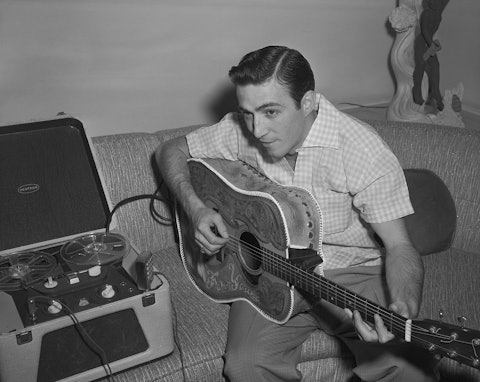
Faron Young playing guitar at his home, c. mid-1950s.
-
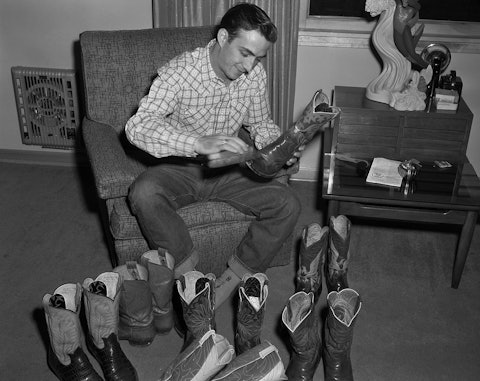
Faron Young polishing his boots at his home, c. mid-1950s.
-
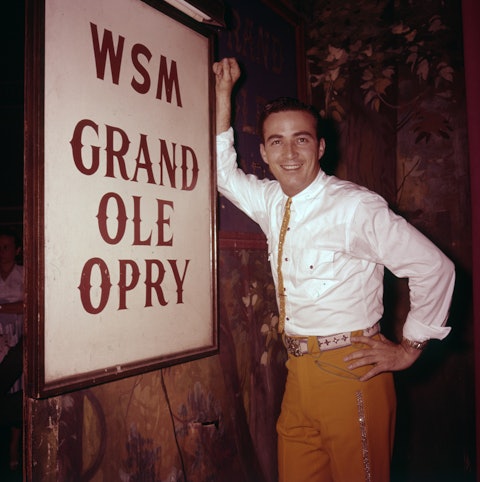
Faron Young backstage at the Ryman Auditorium during a broadcast of the Grand Ole Opry, c. early 1960s.
-

Faron Young signing autographs for fans, c. late 1950s.
-
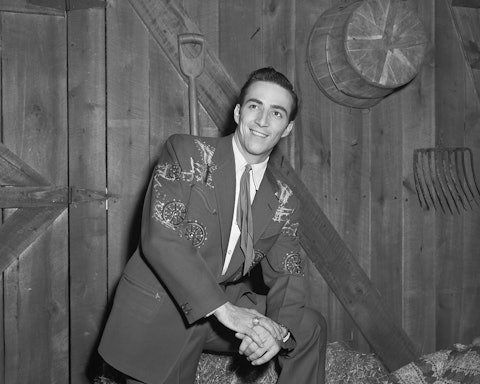
Faron Young on the set of The Country Show, 1956.
-

Faron Young playing bongos, possibly at his home, c. late 1950s.
-

Faron Young (left) and Willie Nelson standing next to a race car bearing the words “Hello Walls,” c. 1960s. The phrase was taken from the hit song of the same name, written by Nelson and popularized by Young in 1961.
Later Recordings
In 1963, Young left Capitol to join Mercury Records. Though initially his Mercury catalog drifted through various bland Nashville Sound stylings, by the end of the decade, he had recaptured much of his hard country fire with hits including “Wine Me Up.” Released in 1971, the waltz-time ballad “It’s Four in the Morning” was one of Young’s finest records and his last #1 hit. By the mid-1970s, his records were becoming overshadowed by his salty persona. In 1972, for example, he made headlines when he spanked a six-year-old girl at a concert in Clarksburg, West Virginia, and was subsequently arrested for assault and fined $24.
In 1979, Young switched labels again, signing with MCA. The association lasted only two years, and little was heard from Young after that until the Nashville-based independent label Step One picked him up in 1988. He recorded for Step One into the early 1990s and then withdrew from public view.
Although young country acts such as BR5-49 were exposing his music to a whole new audience in the mid-1990s, Young apparently felt the industry had turned its back on him. That feeling and despondency over his deteriorating health were cited as possible reasons why Young shot himself on December 9, 1996. He died in Nashville the following day.
—Daniel Cooper
Adapted from the Country Music Hall of Fame® and Museum’s Encyclopedia of Country Music, published by Oxford University Press



